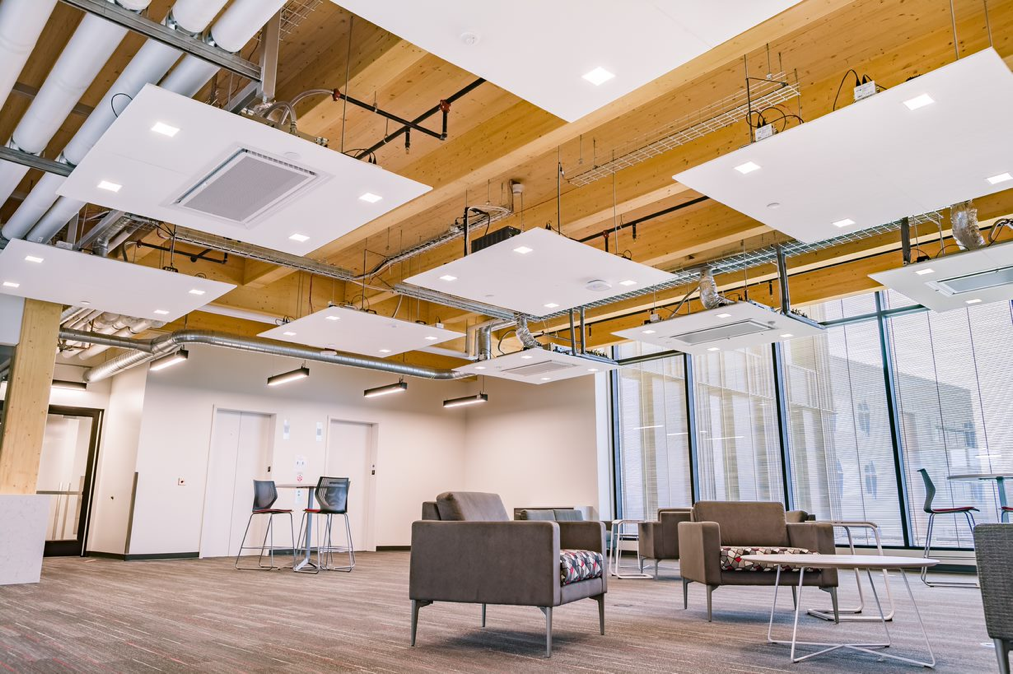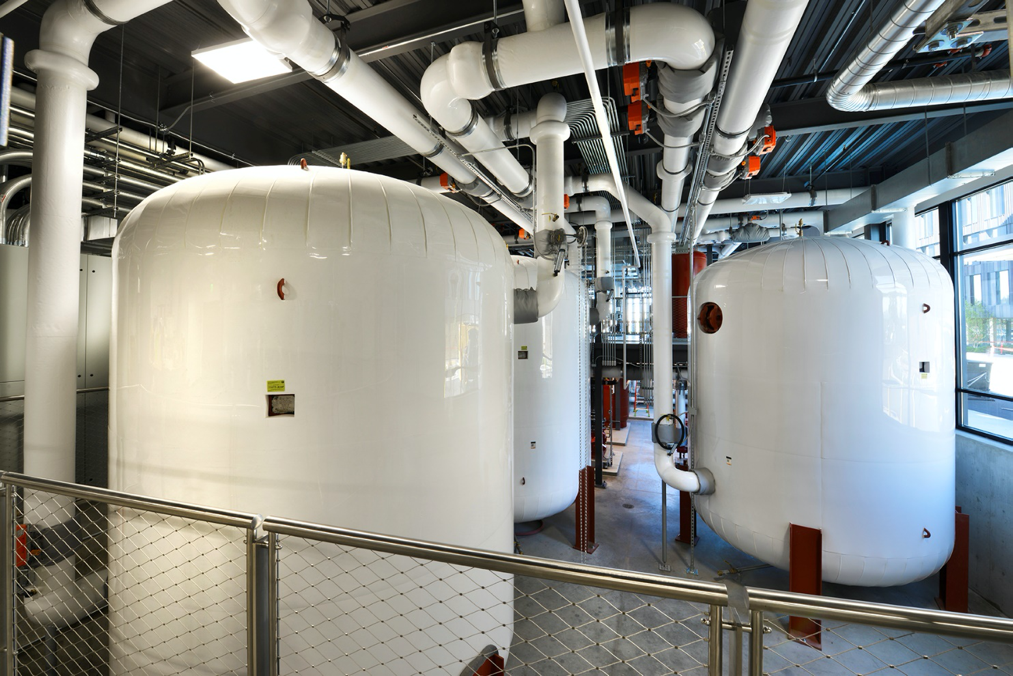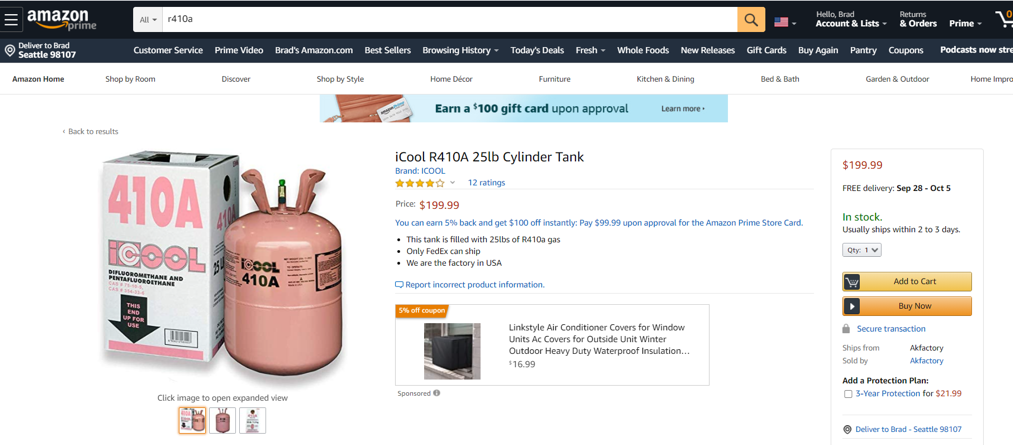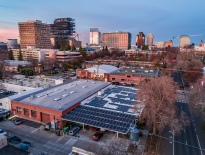The State of Zero Energy + Zero Carbon, Through the Eyes of a Pioneer
Editor’s Note: Brad Liljequist directed the Zero Energy and Zero Carbon programs at ILFI from 2013-2018 and the Living Community Challenge from 2014-2015. Between 2008-2011, he developed the first ILFI certified Energy Petal and Zero Energy community in the United States, zHome. Today, Brad leads Zero Energy and Zero Carbon efforts for McKinstry, a national construction, consulting, and energy services company based in Seattle. McKinstry has just opened the South Landing development in Spokane, Washington, which is home to the zero energy, zero carbon Catalyst building that brings ILFI Zero Energy and Zero Carbon certification to the mainstream (detailed project profile here). We thought it appropriate to get his perspectives on Zero Energy and Zero Carbon in the lead-up to the Zero Carbon Conference.
Zero Energy and Zero Carbon (referred to for the rest of this blog as Zero Energy + Carbon), taken together, have always been an evolving concept, pushing the outer limits of climate solutions in the built environment. They have been remarkably powerful visions for “what good looks like,” driving rapid progress in efficiency and building-connected renewables in a little over a decade of significant use. Yet I believe it is time for us to evolve the concept yet again, to accelerate and realize the full vision of a thriving society, 100% climate positive, efficiently run and renewably powered. In this blog I reflect on where we’ve come, where we are, and where I think we need to go. I also share a few thoughts about how Zero Energy + Carbon should be fully integrated into the mainstream design and development process. I will also draw a few examples from McKinstry’s Catalyst building, which represents many of these next generation elements.
A brief history of ILFI Zero Energy and Zero Carbon
The term “zero energy” first surfaced in the sustainable building world in the early 2000s. At its simplest, a zero-energy building renewably generated at least an equal amount of energy as it used and was assumed to be connected to the energy grid (rather than off-grid). To achieve this goal, the building had to be extremely efficient. Zero Energy was the core concept undergirding the Energy Petal of the Living Building Challenge launched in 2008, which also included critical concepts such as no combustion. In 2012, ILFI introduced the world’s first Zero Energy Certification. Initially, this certification included several elements of the Living Building Challenge, but in an effort to simplify the Zero Energy Certification, these elements were later removed. In 2016, recognizing that Zero Energy was impossible to achieve for the majority of commercial buildings due to intensity of use (such as labs or hospitals) or density (midrise and higher), we created the offsite renewable pathway, to enable offsetting renewables to be placed away from the building, so long as the building maximized efficiency and onsite renewables and the offsite renewables were appropriately sited.
Then in 2018, we entered a new era of Zero Carbon certified buildings. This certification recognized the many parts of the world where true utility-scale renewable power purchases were possible, and combined this with aggressive, but not outer-limit, type efficiency. Later that year, embodied carbon requirements were also added to the Zero Carbon Certification to account for the rapid shift in recognition of this important topic.
Zero Energy + Carbon have proved remarkably effective at broadening the vision and understanding of climate-positive buildings, expanding the audience for super-efficient and renewable integrated buildings beyond energy and green building geeks (sorry, that’s what most of us are!). I still reflect on the 10,000 people who came out to see zHome – the first certified Zero Energy community in the United States – and how “zero energy” was on most of their lips. It captured, and still captures, the imagination.
Zero Energy + Carbon are still works-in-progress, however. Core concepts undergirding the ILFI certifications are “what good looks like” and biophilic, ecosystem-type solutions. I think the most compelling critique of Zero Energy + Carbon historically has been that they have essentially benefitted from the grid without a reciprocal recognition of the needs of the grid. The end game vision is not one of autonomous buildings, using the grid for its independent benefit, but rather an energy ecosystem of buildings, transportation, industry, and renewable generation, sharing thermal and electrical resources that are generated in planet positive ways. Zero energy definitions based on source energy are a nod in this direction, even though they were imperfectly applied. I believe the future of Zero Energy + Carbon will be inclusive of this holistic ecosystem view.

The Present and Future of Zero Energy + Carbon
OK then – without further ado – here are my thoughts on where we stand and where we need to go:
Zero Energy + Carbon have arrived in the mainstream consciousness. In 2016, a handful of us brainstormed how to get “zero energy” said publicly during the U.S. presidential campaign. Apart from those efforts, a little known fact is that Hilary Clinton visited the IBEW facility in City of Commerce, CA, which was targeting zero energy, and did talk at some length about zero energy buildings in a speech there (unfortunately recorded only by a shaky cell phone video, apparently no longer on YouTube), but that was it. Today, “net zero” in a holistic sense is the backbone of the Biden campaign and the Green New Deal. Official corporate policy, well represented by Microsoft’s public announcement this year of committing to ILFI Zero Carbon certification for its Puget Sound campus refresh and Bay Area campus, and Jeff Bezos’ announcement about Climate Pledge Arena and its declared plan for ILFI Zero Carbon certification, are key signifiers that the state of Zero Energy + Carbon has arrived in the mainstream consciousness.
ILFI deserves great credit for championing a vision of an all-electric future and weathering the storm of criticism. Throughout my tenure at ILFI, we were regularly encouraged to soften our stance on natural gas, even by other green building organizations. We were told frequently that if we did, we could likely receive substantial financial support from the natural gas industry. I even had the pleasure of sitting as the lone electrification voice on a keynote stage (with five folks from the gas industry) debating the feasibility of an all-electric future. That was a lonely time, and not that long ago, either. Today, leading jurisdictions are starting to limit natural gas expansion, and some combined gas/electric utilities, including Pacific Gas and Electric, are publicly supporting the transition to electricity.
For the building industry to address the climate crisis, we must also address the building affordability crisis. Productivity in the building sector has been stagnant for decades – unlike every other major economic sector. This means buildings are simply too expensive – making the addition of yet more cost for climate solutions an uphill battle. In turn, this actually opens opportunities to apply deep innovation to reduce cost and carbon at the same time. In the Catalyst building, we were one of the first in the United States to incorporate manufactured cross-laminated timber (CLT) construction in a mid-rise setting, and invented prefabricated multi-service appliances (our patent pending Overcast Solutions Cloud, which integrates lighting, HVAC distribution, low voltage, and IT), substantially reducing our construction cost, while enabling climate positive solutions. Addressing this topic, of course, also helps us address the critical topic of equity in housing and shelter.
The recent strong pivot to embodied carbon was overdue – but everything else is important too. 2018 brought focus on embodied carbon, which continues unabated. Learning and innovation is happening quickly. This is a very important expansion of effort; however,I believe the idea that somehow the efficiency/renewable nut has been resolved (which I have heard from some) is simply not true. We have come quite far – in many cases the solutions are clear – but we still have so far to go, particularly in the area of complete adoption of leading edge efficiency, renewables, retrofits, and especially the full integration of built environment energy systems and a renewably powered grid.
Zero Energy and Carbon buildings should contribute to a larger beneficial grid ecosystem. Even though Zero Energy + Carbon buildings contribute renewable energy to the grid, they are completely grid-reliant for operations, and do little else that is grid-beneficial. In reality, electric utilities operate under substantial constraints, one being the peak infrastructure capacity needed to provide consistent power. For example, because of their typically outstanding envelopes, Zero Energy + Carbon buildings are uniquely able to retain heat or cold, allowing tempering during grid troughs and thermal retention during grid peaks. This can be taken even further through active thermal storage. The Catalyst building is served by the South Landing Eco-District, a shared energy district heating/cooling plant. Designed to serve up to five different buildings, the South Landing plant includes thermal storage tanks, which will allow the heat pumps and chillers to be run in the middle of the night, when grid demand is its lowest. Instead of running a typical mid-winter morning warm up cycle, when the local utility grid is confronted with its peak annual demand, the South Landing plant will already have tanks full of hot water, which will be circulated to Catalyst and other served buildings. This is of enormous value to the utility, and at scale reshuffles the cost equation to enable zero energy/carbon improvements.

Anyone should be able to choose 100% renewable power from their utility – but offsite renewables for Zero Carbon performance are not straightforward in many areas. Something that is not well understood within green building, even by many energy specialists, is that there is a huge range of availability of truly renewable energy purchasable from the utility. A project that seeks Zero Carbon certification in deregulated energy jurisdictions, such as California or the European Union, can typically enter into a renewable purchase agreement with little hassle and a slight cost premium. Here in Washington State, where electricity must be purchased from the local utility, options are much more limited. Only one utility in the state, Puget Sound Energy, offers a full renewable option (Green Direct). Projects in other utility regions must develop their own offsite projects (the path taken by Catalyst) or pay a substantial premium for participation in complex deal structures out of state, which split the electricity and the associated renewable credits.
We must address the global warming potential of refrigerants immediately. Our movement has been successful in mainstreaming heat pumps. Leading jurisdictions are beginning to codify their use. However, the refrigerants they use, if leaked to the atmosphere, have a very high global warming impact. In particular, variable refrigerant flow systems, while extremely efficient, in some cases use literally tons of refrigerants. While alternative refrigerants are sometimes available, it is important to recognize they may have limitations (such as CO2 heat pumps, which have very particular lift temperature profiles). Refrigerant piping and fittings must be improved to ensure they avoid rupture and leakage over their lives. The industry must work together to understand the true lifecycle of refrigerants, with particular scrutiny to the frequency of leakage and end of life disposal. At a minimum, refrigerants must be subject to substantially greater scrutiny and regulation.

Energy storage comes in many forms, some more positive than others. As we create a new renewable world, we need to be eyes wide open to unintended consequences – the “clean natural gas” of a decade ago is the fracking-fraught, explosive, global warming gas of today. Like refrigerants, battery storage has the potential to have negative consequences. At scale, rare materials used in batteries could result in simply moving areas of resource conflict from the Middle East to other parts of the world as demand increases, drawing from both the transportation and building sectors. Thermal and mechanical energy storage are much simpler and avoid these risks. We should work to match the right technologies with the right needs (i.e. high power density with need for light weight, such as in transportation) to minimize these concerns.
The era of natural gas kitchens needs to be over, once and for all. Technology advances and product availability in induction ranges and combi-ovens have made all-electric, highly functional commercial cooking completely feasible. Some major corporations have established all-electric food service as their corporate standard. All-electric kitchens also have a virtuous cycle of efficiency, equipment and space reduction, and equitable health. Induction ranges are extremely efficient at placing heat at the base of the cookware, and thus have very little waste heat, meaning ventilation requirements are lower, and associated makeup heating and cooling is reduced. All-electric kitchen work stations are also smaller than comparable gas based stations. And finally, the burns and heat exhaustion often created for kitchen workers in hot gas kitchens, are significantly less. And of course, as the grid becomes more renewable, so do all-electric kitchens.
In leading jurisdictions, the limits of steady improvements in efficiency are not far away in new construction. In jurisdictions with aggressive codes, where heat pumps, dedicated outdoor systems, vacancy based switching, and improved envelopes are required, the steady 10-20% per innovation/code cycle drop we’ve seen for some time is likely to change within the decade. On a recent potential zero carbon project, we found that with a heat pump/DOAS baseline, after inclusion of all-electric kitchens, excellent air sealing, and plug load management, substantial costs with extremely long paybacks are needed to achieve a 10-15% improvement from standard spec improvement.
At the same time, there is still plenty of room for improvement in actual energy use, especially with plug load reductions. As we innovate in HVAC and drive the fat out of this system, plug loads are becoming the dominant load in many buildings. Fixtures and equipment typically not part of the specification process should be folded into the design process—in particular, IT equipment. Tenants of Zero Energy + Carbon buildings should not move in their old equipment – move-in is a great time to select the most efficient equipment available – and items like computer monitors have reduced their typical load by 75% over the last decade. Current computers also have the ability for their automatic sleep modes to be set up remotely and uniformly by IT departments – this should become a standard procedure in all offices today.
Be sure to design and sell the additional beneficial aspects of Zero Energy and Carbon elements. Everyone, repeat after me: A Zero Energy or Carbon building is a better building and asset, especially when it is actively designed with that in mind. The potential list here is long – tighter envelopes for better health and durability; more thoughtful and effective daylighting and views; thermal comfort; islandable operability; and even beauty. The reality is that as we mainstream Zero Energy + Carbon, we have to be good at selling it to an array of folks. Most people we will engage with will want to do the right thing but will need to find broader reasons as well.

Futureproofing against the coming climate crisis intervention is a good reason for building Zero Energy + Carbon now. To date, most of the Zero Energy + Carbon market has been established using standard market mechanisms, with a handful of government incentives. I personally believe that sometime this decade, as the climate crisis becomes a more experiential reality (fires, anyone?) we will experience a tipping point where our world finally says enough is enough, and a much more top down governmental intervention around energy and carbon will occur, to a degree that it will make Covid efforts look like small fry. Similar to Covid limitations on building and business operations, it is likely energy hog buildings will be confronted with substantial curtailment of their operations through carbon rationing. Building and retrofitting for top efficiency now futureproofs businesses, organizations, and individuals from this potential.
Finally – and perhaps most importantly – commit to living a carbon positive life. I realize this doesn’t quite fit the rest of this post, but it is something I’ve been feeling a lot of late. There are so many unknowns in our future, but we CAN take responsibility for our own lives. If we, the climate vanguard, fully reoriented on our living – in our homes, our transportation, our fuel choices, our food choices, our purchasing – it really would make a difference, driving early adoption innovation. Many of us are strong in one or two areas and weaker in others (it’s meat and air travel for me). As corporations like Amazon drive the Climate Pledge in the corporate and organizational sectors, I believe it is incumbent on those of us leading the climate solutions movement to boldly and enthusiastically show what climate positive living looks like.
Learn more about ILFI’s cutting-edge Zero Energy and Zero Carbon programs and hear from industry leaders at the Zero Carbon Conference, online on October 7-8. Find out details and register here.


